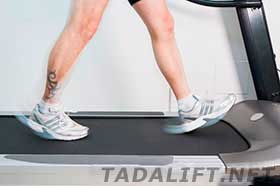The advancing obesity rates, heart problems and erectile dysfunction symptoms are the most common male disorders nowadays. All these conditions can be improved, but it will take much time and effort. Usual medications, which help to deal with the disorders, may be ineffective or launch various side effects instead of positive reactions.  Therefore, regular workouts and lifestyle changes can significantly improve your health state, current health condition and prevent the occurrence of other dangerous health abnormalities.
Therefore, regular workouts and lifestyle changes can significantly improve your health state, current health condition and prevent the occurrence of other dangerous health abnormalities.
Speed walking is an innovative type of daily exercise, which triggers an unlimited number of health benefits for male health. The results of recent investigations showed that speed walking can balance heart functioning, improve sexual strength and enhance the overall condition of male body and health. Only 30 minutes of speed walking a day can contribute immensely to the health state of a man, lowering the risks of serious complications.
Top Benefits of Speed Walking for Men
- Decreased risk of heart disorders. The results of studies approved speed walking to be an effective way to eliminate the development of heart-related complications, including stroke, heart attack or similar cardiovascular impairments. Over 40% of males working out daily managed to improve their heart condition;
- Eliminated symptoms of erectile dysfunction. Males who speed walk frequently show better sexual performance than the ones who don’t. Better strength and endurance helps men to erect longer, while improved blood circulation stimulates the higher quality of erection;
- Obesity treatment. Speed walking is an approved way to lose excess weight, as it helps you burn more calories and decrease cravings;
- Reduced risk of prostate cancer occurrence.
 Speed walking is reported to slow the growth of specific tumor types, restricting their further expansion;
Speed walking is reported to slow the growth of specific tumor types, restricting their further expansion; - Drops blood pressure. Hypertension symptoms can be easily eliminated with regular speed walking;
- Curbed diabetes;
- Better memory;
- Delayed aging;
- Stronger immune system and other health benefits can be achieved with simple speed walking.

